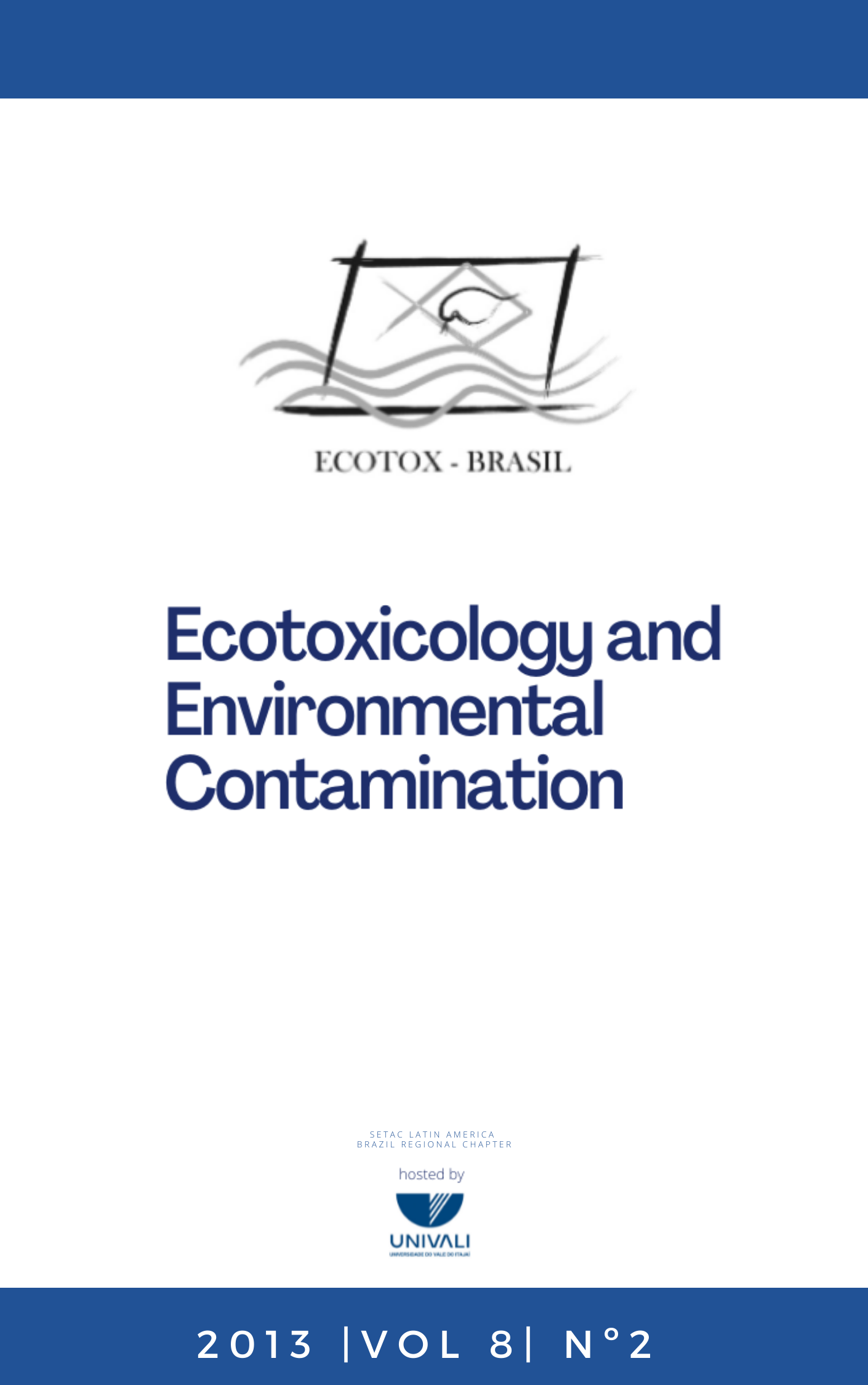Terrestrial disposal of coal mining residues: acid drainage, acute ecotoxicity and bioavailability of heavy metals
DOI:
https://doi.org/10.5132/eec.2013.02.003Resumo
Potential bioavailability and acute ecotoxicity associated with terrestrial disposal of coal mining residues were studied through acute bioassays with earthworms (Eisenia andrei), lettuce (Lactuca sativa) and aquatic micro-crustaceans (Daphnia similis). A composed sample of coal mining residue was collected at some surface deposits at the Urussanga river Basin, one of the three basis of the Southern Santa Catarina Coal Basin, an area highly degraded by mining activities. The bioassays were performed according to procedures described in standard protocols (ASTM, ISO and ABNT). In a hypothetic risk scenario of pyrite acute exposure, the results indicated low levels of ecotoxicity and low bioavailability of toxic metals for earthworms. Significant effects on the germination and morphology of L. sativa were only detected for high rates (~50%) of residue application on the soil. It is probable that such low toxicity levels are related to the short time of pyrite exposure to oxygen, generating a less intense acid drainage. For D. similis, significant damages (immobility) were observed for doses higher than 25% in elutriates, suggesting the occurrence of adverse effects in scenarios where such coal mining residues could be leached.
Downloads
Downloads
Publicado
Versões
- 2024-05-13 (2)
- 2013-11-30 (1)
Como Citar
Edição
Seção
Licença
Copyright (c) 2013 Ecotoxicology and Environmental Contamination

Este trabalho está licenciado sob uma licença Creative Commons Attribution 4.0 International License.
Copyright © 2006 ECOTOX-BRAZIL
Copyright notice: It is a condition for publication that manuscripts submitted to this journal have not yet been published and will not be simultaneously submitted or published of elsewhere. By submitting a manuscript, the authors agree that copyright for their article is transferred to the Sociedade Brasileira de Ecotoxicologia (ECOTOX-Brazil) if and when the article is accepted for publication. The copyright covers the exclusive rights to reproduce and distribute articles, including reprints, photographic reproductions or any other reproduction of a similar nature, including translations. No part of this publication may be reproduced, stored in a retrieval system or transmitted in any form or by any means, electronic, mechanical, photocopying, recording or otherwise, without permission of the publisher.
Notice: While every effort is made by the JBSE, editors and editorial board to see that no inaccurate or misleading data, opinions or statements appear in this journal, they wish to make it clear that the contents of the articles and advertisements published herein are the sole responsibility of the contributors or advertisers concerned. Accordingly, the JBSE, the editorial board and editors and their respective employees, officers and agents accept no responsibility or liability whatsoever for the consequences of any inaccurate or misleading data, opinion or statement.




